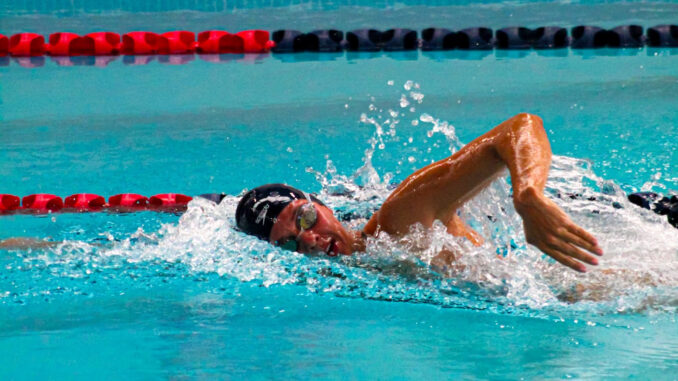
Kaya Rand | Staff Writer
The seven-hour bus rides drag on for Haley Scholer. She naps, and when she can’t do that, she reads a book, or hops on Netflix. It’s not an unusual occurrence for her or anyone else on the swim team, as they drive to meets around the region. But for her, it was all worth it when she qualified for Olympic Trials this Summer.
These are the moments that student athletes live and train for. However, there is so much more to what goes into a game, race or match that the spectators are not aware of. This often-unnoticed mix of hard work, belief and sacrifice is displayed by the student athletes here at Duquesne University.
“I start the day waking up around 5:20 a.m.,” said Scholer, a junior marketing major. “I head over to morning practice until about 7:30 a.m. and then I head to the weight room for lift.”
According to Scholer, for many student-athletes on campus, the day starts at five in the morning, ending at around 10 at night. Yet for her, the hardest part of being a student-athlete isn’t the time management aspect. It is not being able to live a normal college life.
“It’s seeing other people, your age, being able to go out on the weekend or stay up late and hang out while I am at meets, practice or resting,” she said. “It’s much easier to see other people going out when you love the sport, but I think most athletes occasionally wish they had more time for fun outside of the sport.”
Scholer’s perspective of the sacrifices that come with being a student athlete isn’t only isolated to herself, but is in fact a shared experience among many, including Kareem Rozier, a sports information and media major on the men’s basketball team. Rozier says that the hardest part of being on a sports team is finding the balance between enjoying his time in college, but staying focused on schoolwork and sport at the same time.
“This isn’t easy at all,” he said. “It’s almost a job with how much we put our bodies through, mentally and physically.”
Especially in the world of transfers and NIL deals, there are many common misconceptions following student-athletes. Some of these misconceptions are that college athletes only care about their sports, they get everything handed to them, and they don’t do well in school.
“I think a lot of people don’t understand the pressure that athletes put on themselves,” said Libby Majka, a sophomore applied mathematics major on the women’s soccer team. “It’s hard to show up and perform everyday both on the field and in the classroom, especially at such a high level.”
Majka wants people to know that she and her teammates didn’t simply wake up one day and appear in the positions that they are currently in.
“Not only did we work our whole lives to achieve the dream of playing at the Division 1 level, but also while we’re in college we have so much we need to do to be able to continue to be a part of athletics,” Majka said. “It’s a lot of physical and mental work to keep our grades up and be performing in sports.”
Despite having such strict day-to-day schedules and demands, student-athletes find different ways to deal with being overwhelmed by the pressures of school and sport.
For Kailyn Cousin, a junior nursing major on the track and field team, she loves to scroll on her phone, watch TikToks, and do some self-care, calling her family and being surrounded by her friends. Creating a balance between athletic and social life can be very challenging, but for Cousin, she wouldn’t want it to be any other way.
“What it feels like to be an athlete on a Division I level is challenging at times, but I wouldn’t change it for the world,” Cousin said. “I am surrounded by supportive teammates and coaches that make the hardest practices bearable, and the cold and rainy meets fun.”
